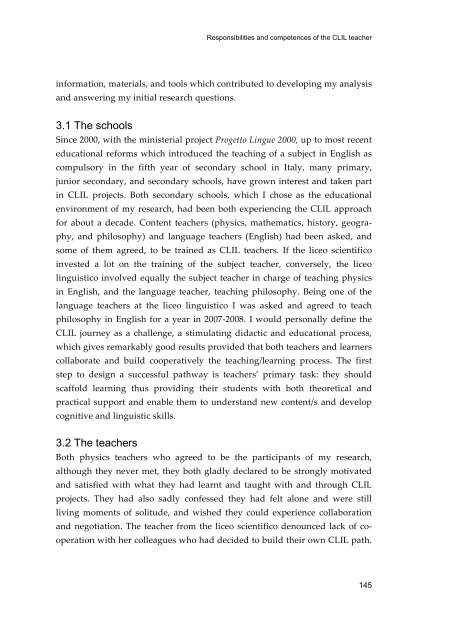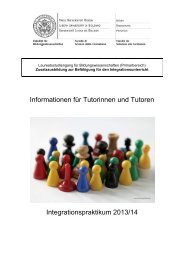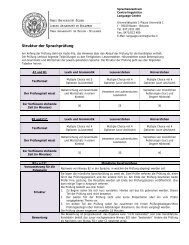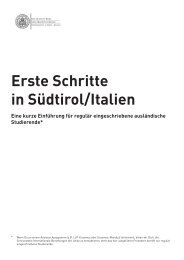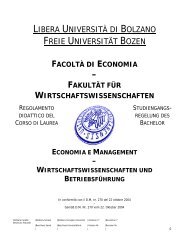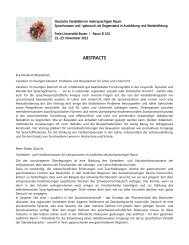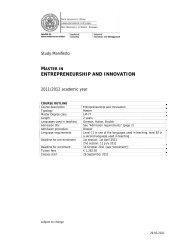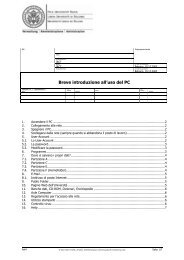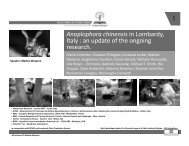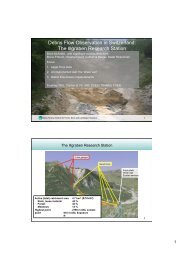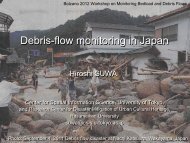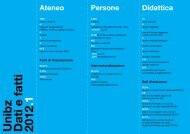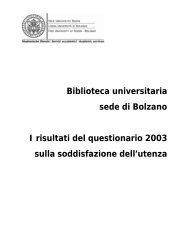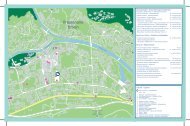Multilinguismo, CLIL e innovazione didattica - Libera Università di ...
Multilinguismo, CLIL e innovazione didattica - Libera Università di ...
Multilinguismo, CLIL e innovazione didattica - Libera Università di ...
You also want an ePaper? Increase the reach of your titles
YUMPU automatically turns print PDFs into web optimized ePapers that Google loves.
Responsibilities and competences of the <strong>CLIL</strong> teacher<br />
information, materials, and tools which contributed to developing my analysis<br />
and answering my initial research questions.<br />
3.1 The schools<br />
Since 2000, with the ministerial project Progetto Lingue 2000, up to most recent<br />
educational reforms which introduced the teaching of a subject in English as<br />
compulsory in the fifth year of secondary school in Italy, many primary,<br />
junior secondary, and secondary schools, have grown interest and taken part<br />
in <strong>CLIL</strong> projects. Both secondary schools, which I chose as the educational<br />
environment of my research, had been both experiencing the <strong>CLIL</strong> approach<br />
for about a decade. Content teachers (physics, mathematics, history, geography,<br />
and philosophy) and language teachers (English) had been asked, and<br />
some of them agreed, to be trained as <strong>CLIL</strong> teachers. If the liceo scientifico<br />
invested a lot on the training of the subject teacher, conversely, the liceo<br />
linguistico involved equally the subject teacher in charge of teaching physics<br />
in English, and the language teacher, teaching philosophy. Being one of the<br />
language teachers at the liceo linguistico I was asked and agreed to teach<br />
philosophy in English for a year in 2007-2008. I would personally define the<br />
<strong>CLIL</strong> journey as a challenge, a stimulating <strong>di</strong>dactic and educational process,<br />
which gives remarkably good results provided that both teachers and learners<br />
collaborate and build cooperatively the teaching/learning process. The first<br />
step to design a successful pathway is teachers’ primary task: they should<br />
scaffold learning thus provi<strong>di</strong>ng their students with both theoretical and<br />
practical support and enable them to understand new content/s and develop<br />
cognitive and linguistic skills.<br />
3.2 The teachers<br />
Both physics teachers who agreed to be the participants of my research,<br />
although they never met, they both gladly declared to be strongly motivated<br />
and satisfied with what they had learnt and taught with and through <strong>CLIL</strong><br />
projects. They had also sadly confessed they had felt alone and were still<br />
living moments of solitude, and wished they could experience collaboration<br />
and negotiation. The teacher from the liceo scientifico denounced lack of cooperation<br />
with her colleagues who had decided to build their own <strong>CLIL</strong> path.<br />
145


